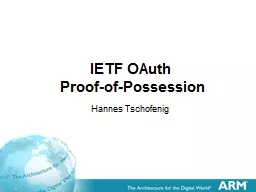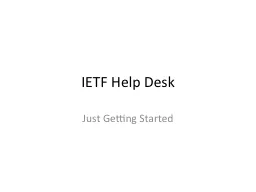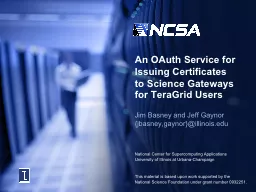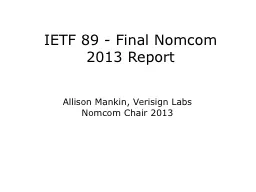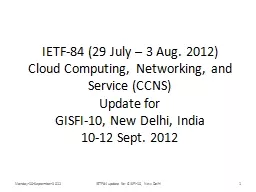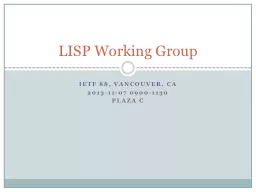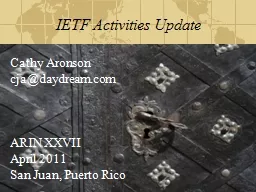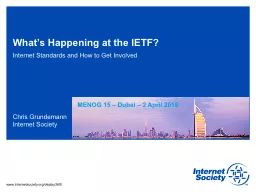PPT-IETF OAuth Proof-of-Possession
Author : natalia-silvester | Published Date : 2018-02-27
Hannes Tschofenig Status Finished various specifications including OAuth Core RFC 6749 Bearer Tokens RFC 6750 Security Threats RFC 6819 Discussion about an enhancement
Presentation Embed Code
Download Presentation
Download Presentation The PPT/PDF document "IETF OAuth Proof-of-Possession" is the property of its rightful owner. Permission is granted to download and print the materials on this website for personal, non-commercial use only, and to display it on your personal computer provided you do not modify the materials and that you retain all copyright notices contained in the materials. By downloading content from our website, you accept the terms of this agreement.
IETF OAuth Proof-of-Possession: Transcript
Download Rules Of Document
"IETF OAuth Proof-of-Possession"The content belongs to its owner. You may download and print it for personal use, without modification, and keep all copyright notices. By downloading, you agree to these terms.
Related Documents

